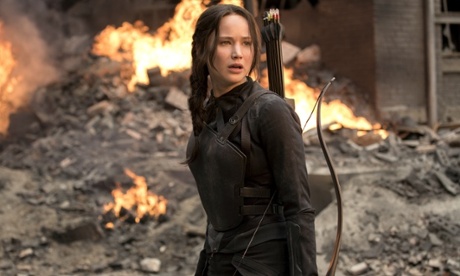
Climate change. We learn about it in school. We see it on the news and nature shows. We’re told it’s coming and it will be irreversible if we don’t do something. But we’re young. Most of us don’t listen, do we? We’re the internet, smart phone, computer generation and most of us aren’t clued up on renewable energy or carbon footprints.
And even when we know all about them, we often don’t think they affect us. I was like that, when I was younger. And then, then I read my first environmental disaster novel - a dystopian.
The idea of a futuristic world devastated by the very things that are affecting the environment now... It was terrifying - the idea that such horror and pain and fear could come from too many cars and forgetting to turn the light off (and cows - don’t forget cows guys: they produce loads of harmful gasses... via a fart!). It was like being really scared in an incredibly vivid way, so unlike all the textbooks I read about the subject before.
Yes, school teaches us a lot of things. Algebra. Science experiments. The difference between affect and effect. But when it comes to current events in the world around us, both environmental and political, does anything really beat a dystopian?Everyone should learn from the mistakes made in books - especially dystopias. If you look at the causes that lead to most dystopian societies, the catalyst is generally the destruction of the environment, or a world war or a huge nuclear explosion. All manmade problems - all things we could so easily stop.
The Fire Sermon by Francesca Haig: huge nuclear explosion that destroyed most of humanity. Same disaster for The Handmaid’s Tale by Margret Atwood led to death and sterilisation.
Mass murder and destruction (though rather unspecified) led to The Hunger Games - and really, who wants that to happen? Definitely not me, because seriously, if I was in the Hunger Games, I would definitely die...
Another unspecified disaster created the world of Divergent - and while it looks not too bad to begin with, hello Insurgent and Allegiant...
Huge environmental disasters (like solar flares and tsunamis) caused the Glades from The Maze Runner universe and I don’t know about you, but I really don’t want to get stuck in the Maze...
And in the Chaos Walking trilogy by Patrick Ness, humanity has moved to a new planet and can now hear everyone’s thoughts and is ruled by a creepy cult-like church that committed genocide and invaded other towns and... it’s not good.
The books are good - amazing - but the world... Yep, would not like to live there either...
You see, there are so many scary, dark beliefs about what’s coming in the future - all of which are covered in dystopian novels. Nuclear apocalypse. Uncontrollable climate change that destroys the environment. A city full of people with pink eyelashes and blue lips (that one might be less realistic). Zombie rising (again, not so likely...).
And climate change is an issue our generation will need to deal with, not something for the distant future. We’re nearing the end of the world, people! Kidding, kidding. I hope...
Seriously, though, the reason dystopia is so huge right now is because it’s just so relevant. I mean, the past is something that’s already been written, the future is the unknown factor: we don’t know what’s going to happen to our environment, if we’ll be able to change it.
And that’s where dystopia come into the equation: they look at all the scary uncertainties we’re worrying about in our time and put them into a devastated future, building a (generally terrifying and evil) society around the disaster. It’s a way of showing the seriousness of environmental conservation, while also helping teenagers and children deal with the harsh facts.
I’m sure we all know that sometimes, it’s ridiculously hard to learn from textbooks in geography lessons. It’s hard to wrap your head around all the facts and statistics and keywords about climate change. And then you read something like Breathe by Sarah Crossan or The Last Wild by Piers Torday and you just totally get it. You completely understand how serious everything is, how badly we need to do something. I mean, who wants to live in a bubble?
Who wants to live in a world where animals have vanished from all but one place? No one! We like real air and we like animals! And this, this is why we need to read dystopians. It makes climate change interesting. It makes us understand how vital environmentalism is. It makes us think. It makes us act. We need to look at all the mistakes made in books that lead to these dystopian worlds and we need to change them.
We need to do everything we can to avoid the apocalypse and we need to learn from books. Recycle. Preserve energy. Don’t set off a nuclear explosion... So now I have a challenge for teenagers and children and parents everywhere. Do something for the environment today. Buy a dystopian. Read it. Understand. Change something. Oh, and buy it as an ebook. C’mon, people. It’s Eco Week.
Is there a book topic you’re burning to write about? Join the Children’s Books site and you could do just that!

